You just never know when it comes to comets. Here it is mid-November, and we’d thought we had finished up writing about bright comets for 2018. That was until this past weekend, when a flurry of messages flashed across the Yahoo! Comets mailing list hinting that a new, possibly bright comet had been discovered. Come Monday morning November 12th, long period Comet C/2018 V1 Machholz-Fujikawa-Iwamoto was formally added to the International Astronomical Union’s Minor Planet list.
The Discovery: The comet was first picked up by veteran comet hunter Don Machholz, observing with his 18.5” reflector from his Colfax, California home on the morning of November 7th. Japanese comet hunters Shigehisa Fujikawa and Masayuki Iwamoto picked the icy interloper headed into the inner solar system just a few hours later. The find was confirmed over the next 24 hours.
746 hours of searching since my last visual comet discovery in 2010 and on Nov. 7.53 UT I visually discovered my 12th comet and today it was confirmed!
— Donald Machholz (@cometmachholz) November 8, 2018
Congrats to Mr Machholz on his 12th comet discovery, the most for any living observer! The find shows that backyard visual observers can and do still occasionally discover new comets. Rarer still, the comet incorporates the name of three amateur observers, a true rarity in the modern age of robotic and automated sky surveys such as PanSTARRS, LINEAR and the Catalina Sky Survey.
The Orbit: First the good: Comet V1 Machholz-Fujikawa-Iwamoto is a dynamically new visitor to the inner solar system on a path measuring in the millions of years plus, meaning that its icy surface has most likely has never been exposed to the heat of the Sun. Most likely, the comet began its long plunge sunward from the Oort Cloud, long ago. Its performance thus far seems to bear this out, as it has already brightened more than a hundred-fold over the past week, from magnitude +13 at discovery to magnitude +7.5 in mid-November. Comet V1 Machholz-Fujikawa-Iwamoto is moving on a highly inclined (144 degree) path versus the ecliptic plane moving retrograde with respect to the inner planets, also not uncommon among long period comets.
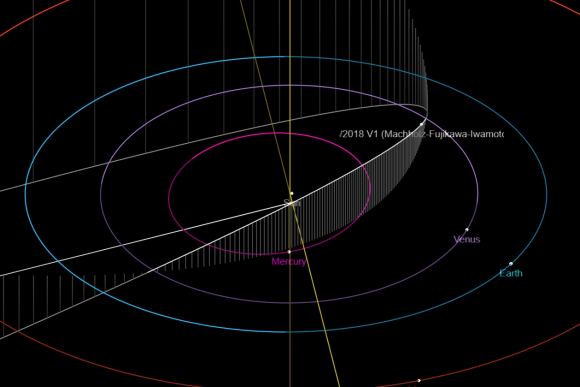
The Prospects: Now, the bad. Comet V1 Machholz-Fujikawa-Iwamoto is rapidly heading in the direction of the Sun in the dawn sky, meaning the time to catch the comet before its lost in the Sun’s glare is now through this weekend. The Moon also reaches Full on November 23rd, and enters the dawn sky. The bright pairing of Venus and Spica will make an excellent guide for finding the comet at dawn as it glides through the zodiacal constellation of Virgo the Virgin:
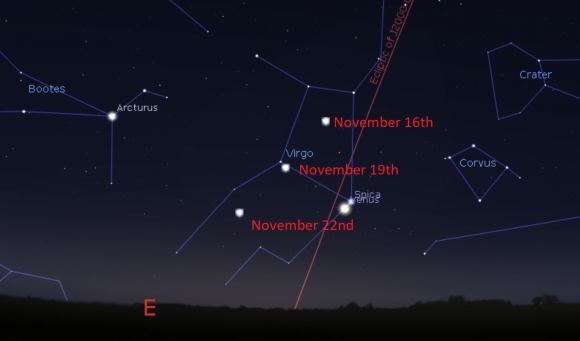
Observing: Already, observers worldwide are picking up the comet with binoculars, a good sign. If predictions hold, the comet should top out at magnitude +5 in early December. This would be a decent prospect, were the comet not headed in the direction of the Sun as seen from the Earth. Already, we’re seeing signs that Comet V1 Machholz-Fujikawa-Iwamoto is “going green” in astrophotographer images due to cyanogen gas shedding in its tail (see the lead image as a good example).
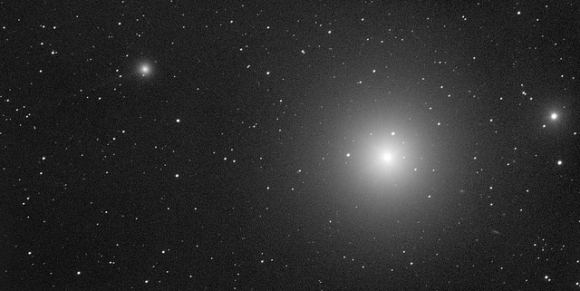
Use Venus and Spica as a guidepost in the pre-dawn sky, then sweep the field with binoculars through Virgo about 10 degrees to the north until you spy a fuzzy ‘star’ that refuses to snap into focus. There’s the comet!
Here are some celestial dates with destiny for Comet V1 Machholz-Fujikawa-Iwamoto. Unless otherwise noted, a “close pass” listed is less than one degree of arc:
November
17-Passes less than 10 degrees from the Spica-Venus pairing in the dawn sky.
18-Passes close to the +3.3 magnitude star Heze (Zeta Virginis).
21-Passes less than 6 degrees from the +8th magnitude dwarf planet Ceres.
24-Crosses into Libra.
25-Crosses into Serpens Caput, and 2 degrees from Messier 5.
27- Passes closest to the Earth, at 0.667 AU distant.
29-Crosses into Ophiuchus.
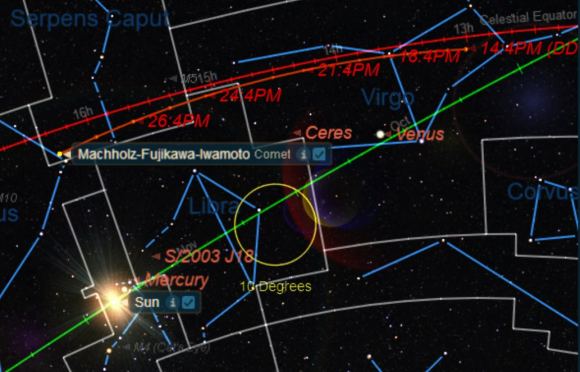
December
1- Photo Op: Passes near Messier 10.
3- Reaches perihelion, at 0.384 AU from the Sun.
6- Passes into the constellation Serpens Cauda.
8- Passes +4.7 magnitude star Zeta Scuti and into the constellation Scutum.
9-Crosses the galactic equator southward.
10-Grouped with Messier objects M11, M16 and M17 in a 10 degree circle.
12-Passes near the +3.5 magnitude star Xi Serpentis.
15-Crosses into the constellation Sagittarius.
21-Passes near the +3.9 magnitude star Rho Sagittarii.
31-Crosses the ecliptic plane southward.
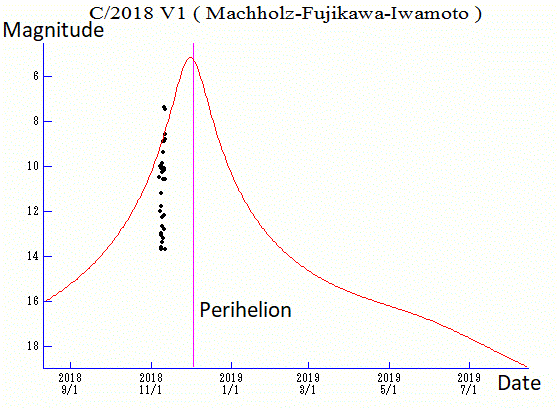
January
1-May drop back down below +10th magnitude.
Beyond that, the comet also enters the Solar Heliospheric Observatory’s (SOHO) LASCO C3 Sun-staring field of view January 8th through January 21st, though it may be too faint to pick up by then.
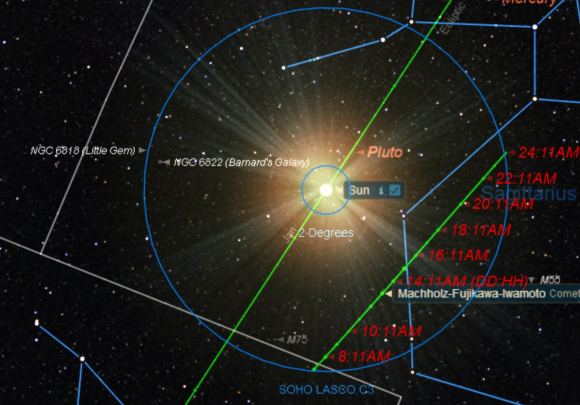
Don’t miss this brief window to see this fast-moving comet.
Other active comets: Also, two other binocular comets currently grace our skies: periodic comets 38P Stephan-Oterma and 46P Wirtanen.
Want to discover a comet for yourself? Learn how to search for and report new comets in our new book, The Universe Today Ultimate Guide to Viewing the Cosmos on sale now!

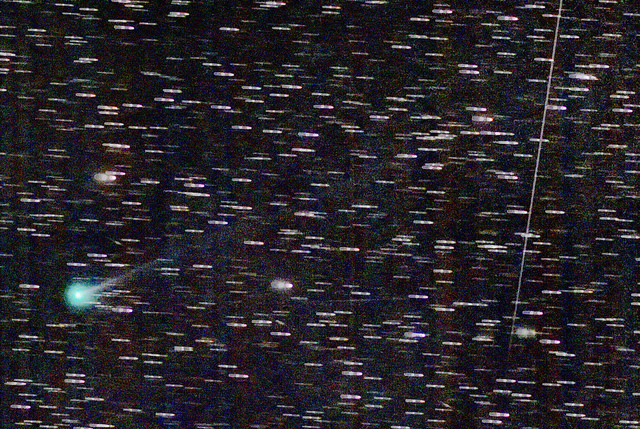
Testing…